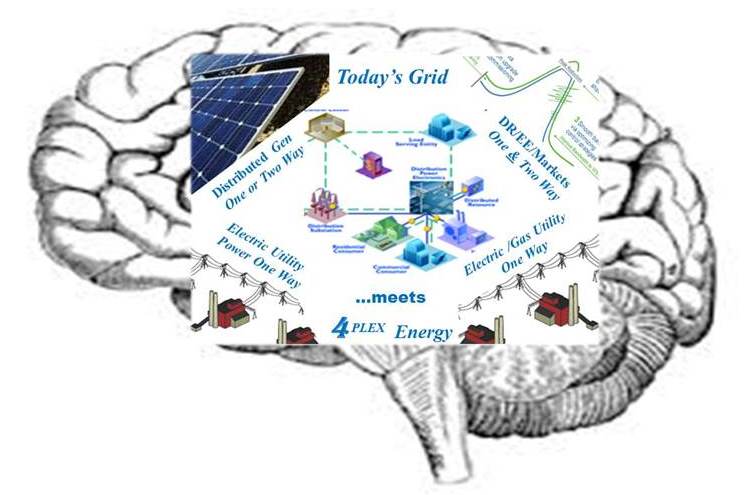Analytics and Business Success

Jack Mc Gowan, CEM
Principal
The McGowan Group
|
May 2014 |
[an error occurred while processing this directive] |
|
4PLEX
Energy™
Analytics and Business Success
|
 Jack Mc Gowan, CEM Principal The McGowan Group |
| Articles |
| Interviews |
| Releases |
| New Products |
| Reviews |
| [an error occurred while processing this directive] |
| Editorial |
| Events |
| Sponsors |
| Site Search |
| Newsletters |
| [an error occurred while processing this directive] |
| Archives |
| Past Issues |
| Home |
| Editors |
| eDucation |
| [an error occurred while processing this directive] |
| Training |
| Links |
| Software |
| Subscribe |
| [an error occurred while processing this directive] |
Those who have spent several decades around automatedbuildings have
seen a number of technology waves. For 15 years we’ve been
fortunate to have my good friend Ken Sinclair running
www.automatedbuildings.com to chronicle those changes on this exciting
venue. Of course Ken could not accomplish that without his
co-founder and able partner Jane Sinclair.
This article is about one of those evolving technologies that are
driving automatedbuildings, as the title implies. A few examples
of past technology evolutions are; the move from mini computers to
microprocessors and distributed direct digital control (DDC) or energy
management systems (EMS); legacy systems and proprietary protocols
migrating to data communications standards like BACnet™ and then
middleware (i.e. Tridium), Convergence, Web Services, the Cloud and now
Analytics.
Analytics is the next monster trend that will impact
energy, buildings and automation. A primary interest for this
author goes beyond the technology itself to explore the business model
opportunities that it presents. Leveraging these technologies
with “know-how” can create sustainable competitive advantages for
business. This process will also be informed by how these
technology evolutions occur in context with other challenges and
opportunities for businesses in this space. Think about how the
advent of distributed DDC caused a business, which was dominated by
three manufacturers with vertically integrated businesses selling
direct and through distribution channels, to expand into a robust
market with over 40 manufacturers selling through multiple
channels. The same was true when middleware spawned a new breed
of specialty contractors called “System Integrators”.
Non-technology events like climate-change and the economic downturn
that started in 2008, resulted in the resurgence of a retrofit market,
driven by energy management and by building improvements. The
savvy business people among us are trying to determine what will be the
next major market driver that shakes the industry. Here is the
answer, it is called “Big Data for Buildings” or “Analytics”.
Analytics presents significant opportunities for energy and
buildings. Whether managers own or manage buildings; it is key to
optimize performance, control cost and find new ways to leverage
greater value from that asset. Analytics is exciting for the
building community because it is a technology rich discipline, which
requires professionals who understand every aspect of building
operations, along with the complex technology deployed. These
building technology include; metering, Building Automation Systems
(BAS), dashboards, middleware, web services / energy services tools,
as they are all sources of data for analytics. With content
knowledge in these areas, System Integrators are better positioned for
analytics success than anyone else in the building space. This is also
true because integrators have had a renewed focus, during the economic
downturn, on; energy management, EnergyStar, utility efficiency
rebates, meters, etc. The graphic below is a bit busy but it should
provide insight into how these technologies, combined with the 21st
Century Electricity Market offer exciting opportunity for integrators
and building owners.
Many have come to associate Analytics with Fault, Diagnostics and
Detection for HVAC, but they are much more than a software tool to
predict when an air handler will fail. Analytics can be combined,
with various Dashboard tools, to provide an essential management tool
to unleash value by optimizing building operations and energy,
particularly electricity, cost. Electricity is the highest quality form
of energy, and is essential for a 21st century quality of life,
including education, business and entertainment technology. Yet
electric energy cost represents the largest controllable operation
expense in commercial buildings, and the U.S. DOE predicts that these
buildings will make up 80 percent of projected growth in energy
consumption between now and 2040. Analytics present an exciting
technology to enable building managers to participate in an electricity
marketplace that offers huge savings opportunity. The author calls this
new market 4PLEX Energy, and it is worth defining. As the title
states, Analytics are the brain that enables this participation in and
value generation from this market.
 Analytics are the Brain of 21st Century Building/Energy Management
Analytics are the Brain of 21st Century Building/Energy Management
The First 4PLEX Energy Type has been around for more than 100 years;
electricity which is purchased from the local utility. We have
always said that the utility system was designed with the idea that
energy goes one way and money goes the other, when the bill is
paid.
The Second 4PLEX Energy Type exists because electricity is
deregulated in nearly half of the U.S. States, and natural gas is
deregulated nationally, so either fuel may be purchased from a “Retail
Provider”. Commercial customers are saving money buying through
retailers, but again that electric and natural gas energy still goes
one way only.
The Third 4PLEX Energy Type is “Distributed Generation” (DG).
Over the past two decades, there has been extensive implementation of
DG from solar photovoltaics (PV). PV has been deployed at utility
scale, but has also become very popular for installation on site by
customers. Solar caught the national consciousness and has been
installed at all sorts of commercial and residential facilities.
The popularity has been stimulated by Federal / State subsidies and a
variety of business models, like Power Purchase Agreements.
Dramatic decline in the cost of solar technology has further stimulated
installation of renewable electric generation as well. Yet renewables
are not the only form of DG. There are still many buildings,
often campuses, with combined heat and power systems, traditionally
called cogeneration. With deregulation, and the ever increasing
number of “super storms”, cogeneration has seen resurgence, and these
systems are now called “microgrids”. After SuperStorm Sandy for
instance, large parts of the eastern seaboard were without power for
days, with the exception of places like Princeton University.
Princeton was able to insulate its’ facilities from long outages that
occurred after the storm with a campus microgrid. This has also been
referred to as Energy Resiliency, and these systems often use
conventional energy sources like natural gas. The author expects
to see more and more hybrid systems as well that combine renewable and
conventional fueled technology. In any case it is typical to size
these systems to provide part, not all, of a buildings energy
needs. When there is a major electricity outage this requires
building managers to use the BAS to shut down non-essential equipment
and operate on less power. During all other times though,
managers can operate this equipment to save money by reducing utility
purchases. With effective analytics tools, these customers can sell
power back to the grid at certain times. This means that
electricity and money can go two ways, and the building owner gets to
add a second revenue stream to repay DG investments. That revenue
is from selling power back to the utility.
The Fourth 4PLEX Energy Type is really energy monetization rather than
energy itself, and it concerns electricity predominantly in deregulated
electric markets. Electricity is a unique commodity because it is
generated and consumed almost instantaneously. As the reader
knows, electricity cannot be stored in a warehouse for use later.
Technology, such as batteries, does exist to store electricity, but
these are not yet cost effective at scale. What does exist however is a
rich ecosystem of programs and strategies that will pay customers to
change behavior and consumption patterns in return for payment. A
good example that requires BAS technology is Demand Response (DR), but
the same technology can also be used sell power back to the grid under
Electricity Bidding Markets. This type of energy is based upon the time
value of electricity, and the use of analytics to develop new
strategies. These strategies allow consumers to be paid for
changing electricity consumption patterns, and for implementing methods
to sell power back to the grid. This can begin with energy
efficiency to reduce electric consumption profiles, but DR, bidding and
market participation all present additional opportunities.
Blending these strategies with microgrid DG creates even greater
opportunity for monetization.
[an error occurred while processing this directive]
In a 4PLEX Energy
market, all professionals will benefit from both understanding and
leveraging the technology discussed here. Electricity markets and
programs offer real economic value, but applying Analytics is the only
way to unlock those benefits for building owners. Clearly the message
here goes beyond dashboards to visualize the data and BAS to execute
the sequences. These must be coupled with the power of analytical
software (i.e. Skyspark™ or Analytika™) that can extract data from
building systems, conduct analysis, and be integrated with BAS and
other controls to execute sequences at the proper time to generate
revenue. There are ample opportunities to gain knowledge in this area,
beginning with www.automatedbuildings.com. There are also a host of other conferences like RealComm and IBConn www.realcomm.com
coming up in June of 2014. Pay attention to opportunities for seminars
and articles in other periodicals as well. The Association of Energy
Engineers, www.aeecenter.org
is an international professional association providing conferences and
training. Project-Haystack is a relatively new organization www.project-haystack.org
that focuses on helping drive standard approaches for sharing device
data among applications, such as analytics and visualization tools. The
open source community hosts an event called HaystackConnect on a
bi-annual basis www.haystackconnect.org.
These are just a few great places to learn more about this exciting
area, and this author believes that a voracious appetite for
information about Analytics, and Electricity markets, will pay off with
exciting opportunities for buildings and businesses.
[an error occurred while processing this directive]
[Click Banner To Learn More]
[Home Page] [The Automator] [About] [Subscribe ] [Contact Us]